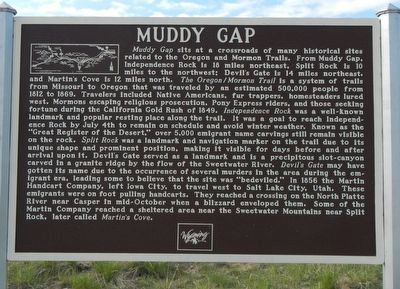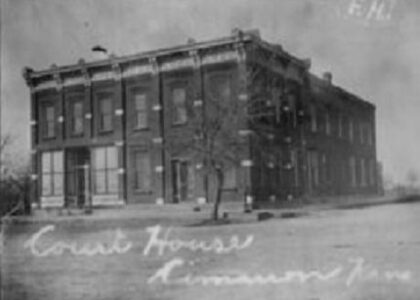Welcome to Muddy Gap, a small but historically significant crossroads in the heart of Wyoming. As you pass by this seemingly quiet junction, you’re actually treading on grounds that have played a pivotal role in the westward expansion of the United States. Muddy Gap, named for the muddy terrain that travelers encountered here, served as a crucial waypoint along the paths forged by explorers and pioneers seeking to conquer the vast American West.
In the mid-19th century, this area was a bustling thoroughfare for those traveling the Oregon, California, and Mormon Trails. The convergence of these trails at Muddy Gap made it a critical juncture for pioneers heading towards new opportunities in the West. Imagine the long trains of covered wagons, the clip-clop of horse hooves, and the rustle of handcarts as families made their way through this gap in the mountains. It was a place where dreams of new beginnings were both challenged and fueled by the rugged landscape.
One of the most notable landmarks near Muddy Gap is Split Rock, a distinctive mountain with a deep V-shaped cleft that served as a beacon for travelers on the Oregon Trail. Just 10 miles north of Muddy Gap, Split Rock was not only a navigational aid but also a symbol of hope and perseverance for the emigrants who saw its peak from miles away. The mountain’s silhouette against the vast Wyoming sky guided countless wagons on their arduous journey.
In the 1850s, the influx of emigrants led to increased tensions with Native American tribes, whose lands and way of life were disrupted by the trail traffic. The U.S. Army subsequently developed the Overland Trail, a route that bypassed South Pass and stretched through southern Wyoming, including the area near Muddy Gap. This trail was part of the broader efforts to establish a network of routes that connected the eastern United States with its western territories.
During the Cold War era, Wyoming’s rich deposits of uranium brought a new wave of attention and economic activity to the region. While Muddy Gap itself was not a mining site, the surrounding areas contributed significantly to the nation’s uranium supply, fueling both energy production and national defense initiatives.
Today, Muddy Gap remains a testament to the enduring spirit of adventure and exploration that defined the American frontier. As you journey through this historic landscape, reflect on the countless stories etched into the land—from the hopeful pioneers of the 19th century to the modern-day travelers exploring the vast Wyoming wilderness. Muddy Gap, though small, is a gateway to the past, reminding us of the challenges and triumphs that have shaped the nation.
Whether you’re passing through by car or wandering on foot, take a moment to appreciate the historical significance of this unique crossroads. The legacy of Muddy Gap lies not in grand monuments or bustling cities, but in the quiet power of a place that once connected the dreams of so many to the possibilities of the American West.





